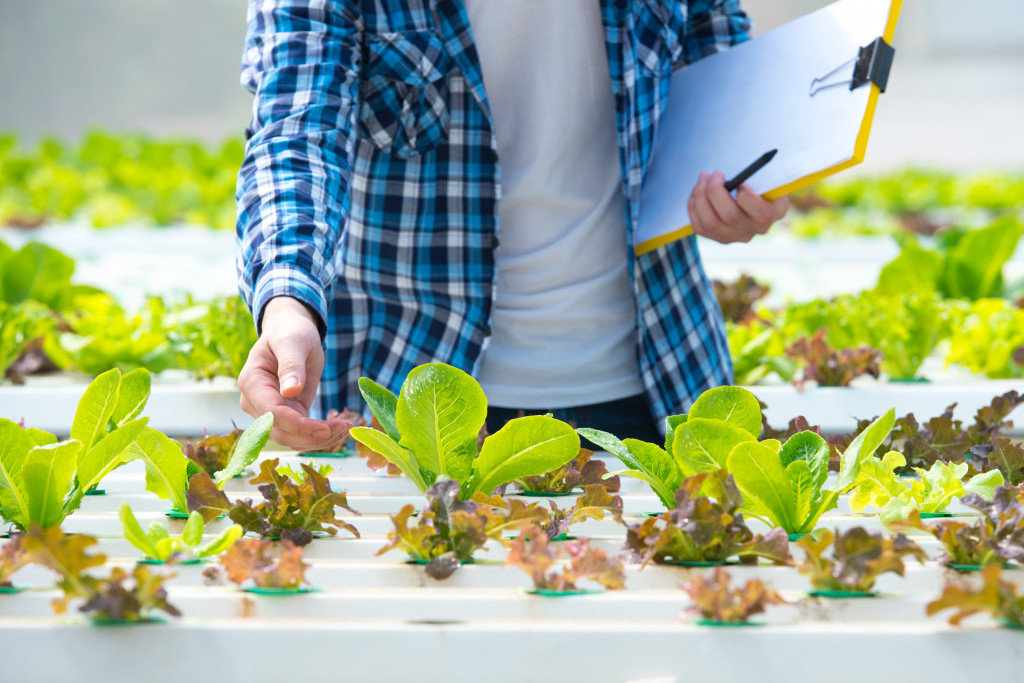Landscaping these days has evolved. It is no longer about ornamentals and curbside appeal only. Goals can also revolve around improving health, preventing soil erosion, using water resources more efficiently, and even growing one’s food.
Indeed, commercial landscaping services now specialize in many things. For communities that want to be more self-sufficient, they can consider working with the experts to help them create a foodscape.
What Is Foodscaping?
Sometimes called edible landscaping, foodscaping describes landscape design principles that strategically incorporate plants for ornamental appeal and edible or consumable fruits, vegetables, herbs, or spices while ensuring these choice plants receive adequate sun exposure for optimal growth.
In a foodscape, edible plantings are not relegated to window boxes or scattered sparsely throughout the yard. In fact, they form the backbone of landscape design by carefully selecting which edible plants provide an ornamental focal point for backyard landscaping and which ones surround it.
Why Communities Should Consider Edible Landscaping
Edible landscaping also has significant benefits over regular landscaping:
1. Edible Landscapes Provide Privacy Protection
Planting fruit trees or tall shrubs will help hide unsightly view-blocking fences (without blocking light, which is important for house plants) while maintaining privacy. A fruit tree hedge can be grown around the edge of the property to provide privacy.
2. Edible Landscaping Offers Increased Security
Edible landscaping is not only attractive but also offers excellent security. By growing shrubs and trees on an urban lot, you can break up sightlines, so intruders cannot see what’s within nearby properties. These homes might need less expensive perimeter fencing than if you were installing a security system alone.
3. Foodscaping Is Low Maintenance
By planting low-maintenance fruit trees and bushes rather than perennials, you will save yourself hours in garden maintenance over the growing season. A small rosemary bush can be maintained in just half an hour each month (from pruning to picking leaves), whereas a flowerbed full of perennials might take four times as long to maintain every eight weeks. And think about what you could do with all this extra free time.
4. Edible Landscapes Produce Organic Food for the Community

Who wouldn’t want fresh herbs and fruit harvested nearby? You can plant many types of fruit trees, including orange and lemon. Berries such as blueberries can be grown in containers or small spaces. These plants also attract bees and other pollinators to your garden, providing you with an organic, pesticide-free food source!
5. Edible Landscaping Provides Habitat for Wildlife
By planting fruit trees and berry bushes that produce year-round, you will provide habitat for birds all year long! Placing bird feeders throughout the landscape to supplement the natural food sources is a great way to get closer to our feathered friends without having them invade homes searching for food or water during nesting season.
6. Edible Landscapes Maintain a Healthy Body and Mind
The health benefits of gardening or even just spending time in a garden are well documented. Several studies have found that gardening is good for mental, emotional, and physical health. And the earlier you start, the better. Children who spend time outdoors grow up to be happier and healthier adults!
7. Edible Landscaping Keeps Currencies Local
When you buy produce from faraway places, you not only pay more for it than if it had been grown locally but also hurt your local economy by sending money out of your community.
On the other hand, when you buy produce from nearby farmers or raise your food in a community garden, you support local farms and businesses. Buying locally also reduces pollution caused by unnecessary transportation.
8. Foodscapes Beautify Urban Living
When you think of gardening, the chances are high that plants spring to mind. But edible landscaping is really about integrating useful plants into the community’s yard! A well-tended fruit tree or berry patch can provide shade for seating areas, while olive trees offer lots of different varieties to choose from.
How to Choose and Grow Edibles
To ensure successful growing conditions for edibles, especially those with a finite lifespan, these choices should be situated in areas where enough sunlight will fall upon canopy leaves to keep them healthy and productive for years, if not decades to come.
Of course, there is no reason why you cannot grow some vegetables as annuals in planters, even if you do not want to install them as permanent landscape fixtures. Annual veggies like radishes and carrots might look cute in a container, but the water they use won’t do anything to help the lawn’s drought tolerance come summer.
So how do you know which plants (annuals and perennials) make great edibles and how many of those you can successfully grow at one time?
You can always read books with lists of edible landscape plants for inspiration. But before you go shopping for any fruit-bearing plant at a nursery or garden center, it is best to find out whether your yard gets an adequate amount of sunlight for such bounty-producing efforts.
Expert landscapers who stay updated with trends can provide you with excellent suggestions. They can help match both ornamental and edible plants with the soil and weather conditions of the area, as well as the needs of the community.

